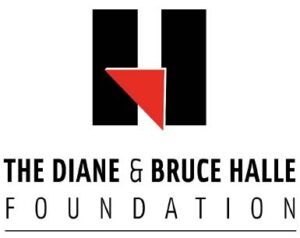Ballet Arizona Book Club
Ballet Arizona’s Book Club is Back!
Free and open to the public, we invite you to join us as we build community around and appreciation for the incredible art form of dance. Over three engaging sessions, we’ll delve into the selections listed below. Our Book Club meetings will offer a hybrid experience, allowing attendees to participate either in person or virtually via Team Meeting. Access details will be shared closer to the meeting dates. Facilitating these discussions will be Claire Schmaltz, Community Engagement Director.
Ballet Arizona Book Club Meeting Schedule
Book Club Meeting #1: Bravura!: Lucia Chase and the American Ballet Theatre
Wednesday, October 16th, 2024 | Free | Pre-registration is required to receive the Zoom Meeting Information
To many people, Lucia Chase (1897-1986) was the American Ballet Theatre, and her reign as the queen of American ballet lasted for more than four decades. It was Chase who brought Nureyev, Bujones, Kirkland, and eventually Baryshnikov to ABT. Under her leadership, the company worked with such legends as Agnes de Mille, Anthony Tudor, Jerome Robbins, and Twyla Tharp. Her drive, ambition, tenacity, and money kept the doors open even during the lean years. A dancer when the company made its debut in 1940, she was artistic director for an unprecedented thirty-five years, from 1945 to 1980. Over the course of her career, she received numerous honors and awards, including the U.S. Medal of Freedom, the nation’s highest civilian honor. Combining unique personal insights as Chase’s son along with experience garnered from his own professional dance and administrative career, Alex Ewing offers the definitive story of one of the true pioneers in the world of American ballet.
Book Club Meeting #2: Bolshoi Confidential: Secrets of the Russian Ballet from the Rule of the Tsars to Today
Wednesday, January 15th, 2025 | Free | Pre-registration is required to receive the Zoom Meeting Information
On a freezing night in January 2013, a hooded assailant hurled acid in the face of the artistic director of the Bolshoi Ballet. The crime, organized by a lead soloist, dragged one of Russia’s most illustrious institutions into scandal. The Bolshoi Theater had been a crown jewel during the reign of the tsars and an emblem of Soviet power throughout the twentieth century. Under Putin in the twenty-first century, it has been called on to preserve a priceless artistic legacy and mirror Russia’s neo-imperial ambitions. The attack and its torrid aftermath underscored the importance of the Bolshoi to the art of ballet, to Russia, and to the world.
The acid attack resonated far beyond the world of ballet, both into Russia’s political infrastructure and, as renowned musicologist Simon Morrison shows in his tour-de-force account, the very core of the Bolshoi’s unparalleled history. With exclusive access to state archives and private sources, Morrison sweeps us through the history of the storied ballet, describing the careers of those onstage as well as off, tracing the political ties that bind the institution to the varying Russian regimes, and detailing the birth of some of the best-loved ballets in the repertoire.
From its disreputable beginnings in 1776 at the hand of a Faustian charlatan, the Bolshoi became a point of pride for the tsarist empire after the defeat of Napoleon in 1812. After the revolution, Moscow was transformed from a merchant town to a global capital, its theater becoming a key site of power. Meetings of the Communist Party were hosted at the Bolshoi, and the Soviet Union was signed into existence on its stage. During the Soviet years, artists struggled with corrosive censorship, while ballet joined chess tournaments and space exploration as points of national pride and Cold War contest. Recently, a $680 million restoration has restored the Bolshoi to its former glory, even as prized talent has departed.
As Morrison reveals in lush and insightful prose, the theater has been bombed, rigged with explosives, and reinforced with cement. Its dancers have suffered unimaginable physical torment to climb the ranks, sometimes for so little money that they kept cows at home whose milk they could sell for food. But the Bolshoi has transcended its own fraught history, surviving 250 years of artistic and political upheaval to define not only Russian culture but also ballet itself. In this sweeping, definitive account, Morrison demonstrates once and for all that, as Russia goes, so goes the Bolshoi Ballet.
Book Club Meeting #3: Ballet 422 (Documentary)
Wednesday, April 9th, 2025 | Free | Pre-registration is required to receive the Zoom Meeting Information
From first rehearsal to world premiere, Ballet 422 takes us backstage at New York City Ballet as Justin Peck, a young up-and-coming choreographer, crafts a new work. Ballet 422 illuminates the process behind the creation of a single ballet within the ongoing cycle of work at one of the world’s great ballet companies.
The Complete List of Ballet Arizona's Book Club Picks
- A Body of Work: Dancing to the Edge and Back by David Hallberg
- Life In Motion by Misty Copeland
- The Voice of Juan Gabriel (La Voz de Juan Gabriel)
- Celestial Bodies: How to Look at Ballet by Laura Jacobs
- George Balanchine: The Ballet Maker by Robert Gottlieb
- Maria Tallchief: America’s Prima Ballerina by Maria Tallchief and Larry Kaplan
- Bunheads by Sophie Flack
- Taking Flight: From War Orphan to Star Ballerina by Michaela DePrince and Elaine DePrince
- Marius Petipa: The Emperor’s Ballet Master by Nadine Meisner
- Dance Theatre of Harlem: A History, A Movement, A Celebration by Judy Tyrus
- Dancing Past the Light: The Life of Tanaquil Le Clercq by Orel Protopopescu
- Tears of a Ballet Mum by Sabine Naghdi
- Being a Ballerina: Being a Ballerina: The Power and Perfection of a Dancing Life by Gavin Larsen
- The Ballerina Mindset by Megan Fairchild
- ABT: A History (Documentary)

